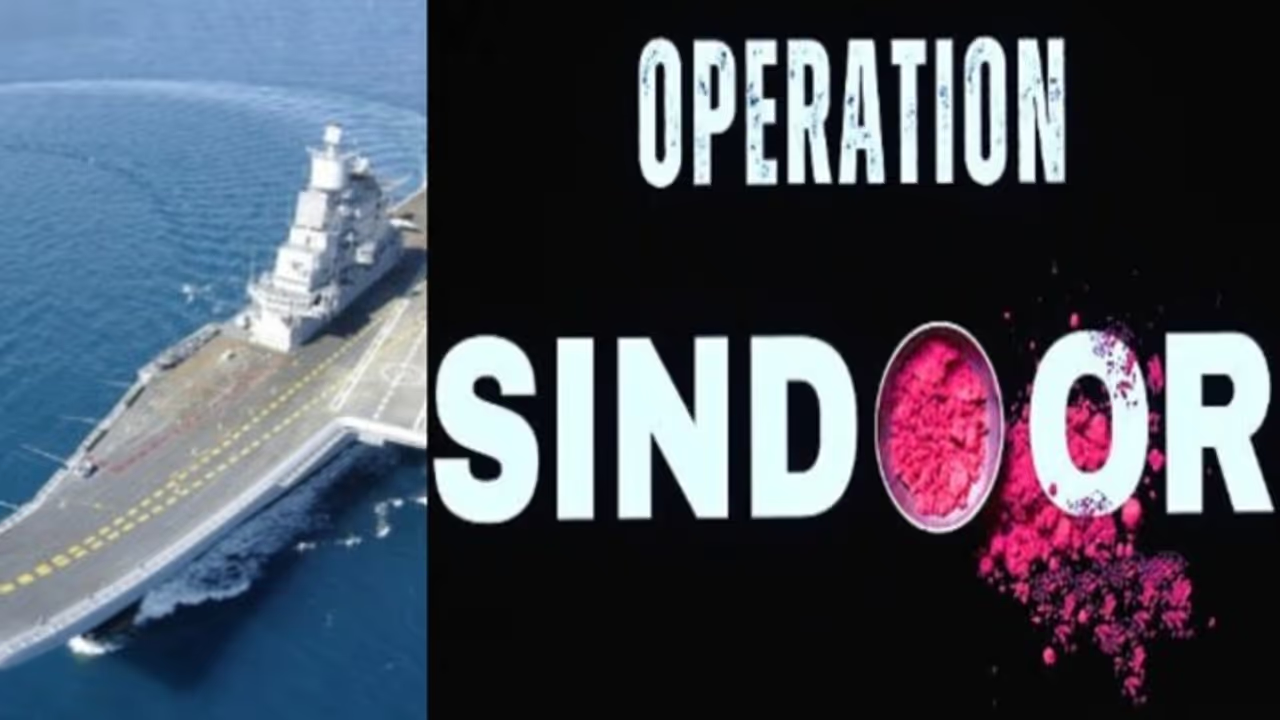INS Vikrant’s deployment during Operation Sindoor forced Pakistan’s navy into a defensive posture, exposing strategic weaknesses. The Indian carrier’s presence led to a doctrinal rethink, marking a major shift in regional naval dynamics.
New Delhi: When the Indian Navy’s INS Vikrant sailed into the northern Arabian Sea during Operation Sindoor, it was more than just a display of maritime prowess.

It was a psychological shockwave that reverberated through Pakistan’s naval command.
Pakistan Navy’s Vice Admiral Raja Rab Nawaz, Deputy Chief of Naval Staff (Operations), stated during an May 11 press conference that there was a ‘huge difference’ between INS Vikrant and Western carriers.
“This is an aircraft carrier which essentially served with 8 — 12 MiG-29s, which were barely essential to carry out its own air defence. The purpose of carriers is power projection and to ensure air superiority in a given sea area. So, with this, the less said, the better. This is simply not possible, and the Indian Navy exactly knew this.”
Despite official attempts to downplay the significance of India’s first indigenously built aircraft carrier, the presence of INS Vikrant forced Pakistan to reassess its entire crisis posture, exposing deep-rooted anxieties and doctrinal limitations within its navy.
Contradictions at the Top: Nawaz’s Carrier Conundrum
In the days following the Pahalgam attack, as Indian naval assets surged towards Pakistan’s coastline, in little to no time, Pakistan’s naval command issued high-alert orders, suspended all non-essential ship movements, and began preparing contingency plans for port defence.
On the one hand, even as the leadership projected confidence, the navy’s actions betrayed a sense of urgency and unease.
The mere presence of INS Vikrant, capable of launching multi-role fighters, surveillance aircraft, and anti-ship missiles, forced Pakistan to reconsider the vulnerability of its coastal infrastructure and the survivability of its fleet in open waters.
Carrier Group Operations: Shifting the Strategic Balance
The Indian Navy’s carrier strike group, centred around INS Vikrant and escorted by BrahMos-equipped destroyers and advanced frigates, represented a quantum leap in India’s maritime capabilities.
Unlike previous deployments, this group operated with full combat readiness, conducting live-fire drills and coordinated manoeuvres within striking distance of Karachi.
The Indian Navy’s ability to project power, maintain air superiority, and enforce sea control fundamentally altered the calculus for Pakistan’s naval planners. India’s naval posture exuded confidence, while Pakistan’s revealed its insecurities.
INS Vikrant’s air wing extended India’s surveillance and strike envelope deep into Pakistani waters, while its escorts provided layered defence against submarines and missiles.
The Indian Navy’s seamless integration of real-time intelligence, electronic warfare, and surface-to-air capabilities left Pakistan’s fleet with little room to manoeuvre.
Disruption of Maritime Confidence
The psychological impact of INS Vikrant’s deployment was immediate. Pakistan’s navy, traditionally reliant on coastal defence and hit-and-run tactics, found its doctrine outdated in the face of a modern carrier group.
NAVAREA warnings were issued, restricting commercial and military vessel movement near Karachi, and naval units were ordered to remain close to port. Exercises and patrols in the open sea were curtailed, and the focus shifted to protecting key assets rather than contesting Indian dominance.
This defensive crouch marked a dramatic shift from Pakistan’s earlier posturing. The confidence once displayed in public statements evaporated as the reality of India’s maritime reach set in.
The prospect of facing carrier-launched airstrikes and precision missile attacks forced Pakistan’s navy to adopt a reactive, rather than proactive stance, undermining its claims of perpetual readiness and exposing the limits of its operational depth.
INS Vikrant did not just dominate the seas; it dominated the strategic imagination of its adversary, compelling a doctrinal reckoning that will shape Pakistan’s navy for years to come.
Disclaimer: The opinions expressed are solely those of the author and do not reflect the views or stance of the organization. The organization assumes no responsibility for the content shared.


